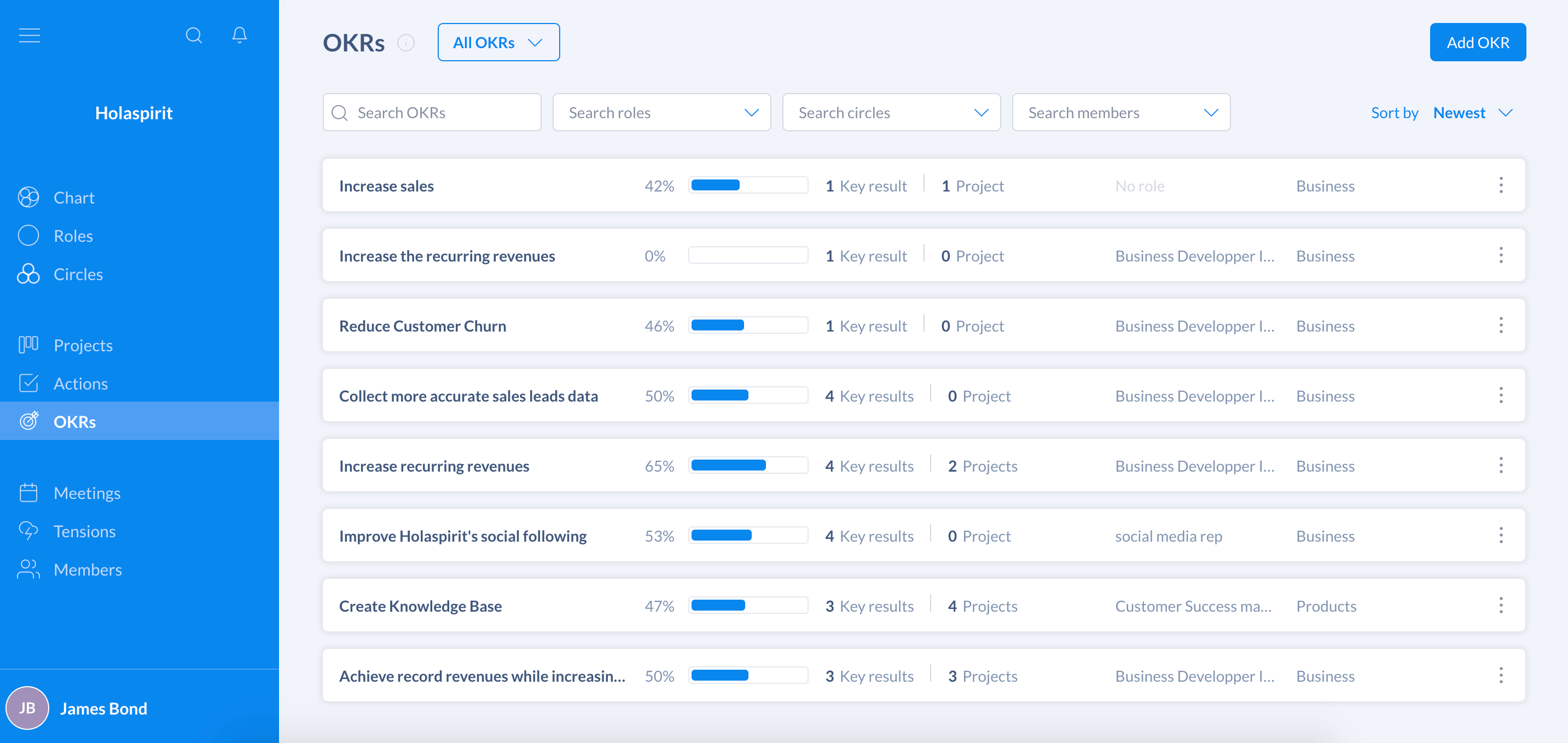Many organizations are faced with a steady stream of resignations and turnover that can be hard to control. According to one study, 36% of people who changed jobs did so mainly because they were dissatisfied with their work environment or company culture.
To retain talented employees, some companies have opted for an approach based on transparency. This is particularly true of Talkspirit, a provider of solutions that boost business performance through improved internal communication and team collaboration. We interviewed Philippe Pinault, the company’s CEO and co-founder, to find out how greater transparency can have a real impact on talent retention.
In this article, he reveals his tips for integrating transparency into your talent retention strategy.
Transparency as a lever of loyalty
Why has talent retention become such a critical concern for companies?
Before you can build employees’ loyalty, you first have to recruit them. That’s not as simple as it sounds because, as Philippe Pinault explains, “the scarcity of talent makes recruiting all the more complex.”
This complexity can translate into “pressure, targets, and scarcity of available talent,” says Philippe Pinault. And this can subsequently lead to “costly casting errors down the road.” According to the U.S. Department of Labor, a failed recruitment can cost up to 30% of an employee’s annual salary. 😬 The sort of sobering loss that makes talent retention such a crucial issue for companies today.
How can transparency improve talent retention?
Philippe Pinault cites a first element and declares that “transparency is the basis of trust. The two are inseparable. Establishing trust within your organization means being transparent about a number of things: the company’s vision, ways people work together, who does what, etc.” And trust is the key to employee loyalty! This concept even has a name: “management by trust.”
As a second element, he adds: “Transparency brings understanding of information within the organization, of working methods, and so forth. In fact, the aim of a company is to be a platform for collective intelligence, an organization in which everyone puts their intelligence to work for the benefit of others. And lack of transparency hinders all this! If there’s no transparency, then you wind up in an environment where information is in short supply, where you’re dependent on your manager, and where your capacity for initiative is limited. Transparency provides organizations with support for understanding, initiative, and action.”
Generally, he says, “Transparency enables the organization to be much more agile, innovative and successful. It is truly one of the fundamentals of a culture that fosters innovation, agility, and ultimately, talent retention.”
How can I improve transparency within my operation?
Best practices for transparency
There’s no big mystery to internal transparency. According to Philippe Pinault, “It’s all a question of will!” All you have to do is review several aspects of your organization and integrate transparency. Here are a few best practices:
Streamline access to and sharing of information
“Keep information flowing smoothly day after day by setting up rituals specific to your operation. For example, at Talkspirit, we’ve decided not to use email for internal communication. Instead, we share information in themed groups—both in chats and on the news feed” (depending on the type of information shared).
Put a leash on meeting madness
“To avoid the proliferation of meetings, we’ve chosen a monthly meeting format. It’s the key moment for sharing information and fostering a clear understanding of what’s going on within the company and how it’s evolving.“
Document your practices
“Documenting business practices offers a clearer picture of what’s going on within the organization, and that’s better transparency. On Talkspirit, for example, it’s possible to gather this data in the library. This documentation can include onboarding methods, policies, work processes, and much more. All these represent essential day-to-day support for promoting information transparency within the company.”
Empower teams and employees
“Transparency is empowering! Creating a transparent environment accelerates integration of processes and development of new skills. For example, at Talkspirit, we share a strategic roadmap every years in which we document how our office suite is accessible to all. We then break this down into OKRs (objectives and key results) using Holaspirit’s own OKR module. These OKRs are then associated with the roles and responsibilities of each employee, and are accessible to all, in complete transparency! Transparency creates an empowering framework for everyone, because all information is visible and easily accessible.”
According to Philippe Pinault, “It’s thanks to all these practices—supported by dedicated information-sharing tools—that you, too, can develop this transparency!”
Want to know more about internal communication and governance tools? Find out how Talkspirit can help you with two complementary solutions:
- Talkspirit, the digital workplace that streamlines team communication and collaboration
- Holaspirit, the self-management platform designed to give teams greater autonomy and responsibility to make better decisions and achieve goals.
How can I support adoption of these practices internally?
To ensure a smooth transition to a more transparent working environment, Philippe Pinault recommends 3 key steps:
- Demonstrate clear intentions.
“There’s nothing worse than seeing tools piling up one on top of the other and having the feeling of no longer knowing where to even begin looking for useful information,” He explains. “The company’s general management has a central role to play in defining its vision of sharing and collaboration within the company, as well as in the choice of supporting platforms and tools.” A good strategy starts with a clear vision, a course that will enable all business lines and teams to define consistent practices. - Decide.
He continues: “There are no secrets: if you want to develop a culture of sharing and collaboration to foster greater transparency and collaboration, decisions need to come from the highest level, with policies and practices imposed and/or incentivized.” These practices can be spelled out in policies, charters, and onboarding guides (playbooks), which clarify where and how to share information and document the organization’s knowledge. - Set an example.
“Setting an example is an essential prerequisite for any transformation process,” says Philippe Pinault. To anchor new practices, management must set an example. He explains, “Local managers and lead teams in particular have a major responsibility in relaying and implementing the desired practices throughout the organization. They are the driving force behind change. Without a driving force that represents these practices and values, it is unlikely that a team will function optimally.“
Discover Talkspirit CEO Philippe Pinault’s video tips for improving your talent retention strategy through transparency!
How do you measure the effectiveness of your talent retention strategy?
Once you’ve implemented a talent retention strategy within your company, it’s essential to be able to evaluate its effectiveness. Philippe Pinault explains that this can be done in several ways:
Define and monitor HR indicators
“These indicators measure retention and turnover.” That means you can assess the effectiveness of your actions over time!
Also read : Gartner: 5 trends for HR to watch through 2023 – Talkspirit
Launch an “internal survey to measure employee satisfaction and well-being.”
This survey enables you to gather feedback from employees on topics such as well-being and engagement at work. This enables you to measure the effectiveness of your strategy, and adjust it according to their needs.
Measure “goal attainment”
Philippe Pinault recommends defining OKRs (Objectives and Key Results) beforehand, to empower teams in defining their objectives in line with the unit (department, branch, etc.) to which they are attached, and to encourage alignment and progress monitoring in a transparent way for the whole organization. To deploy the OKR method, we use our Holaspirit solution! It’s THE solution for tracking our objectives and sharing your key results, thanks to a complete OKR module directly attached to each team.

Analyze in-house email usage
“Although widely used for communication, email remains an obstacle to the development of a culture of sharing and collaboration. Indeed, email remains a tool that confers ownership of information on its recipient and is therefore dependent on his or her presence in the organization,” Philippe Pinault says. As an alternative, give preference to sharing information via groups on a corporate social network or instant chat rooms. By exposing content to the right audiences on a platform owned by the organization, you make this information available to everyone.” For him, “It’s possible to drastically reduce the volume of emails in organizations as soon as you encourage the sharing and dissemination of information on a communication and collaboration platform. At Talkspirit, we haven’t used email internally for almost 10 years.”
Also read : How Talkspirit Helped IM du Biterrois Reduce Internal Emails
“This is a key indicator to consider! You can assess it by comparing the number of documents stored in your personal drive to those in shared drives. The practice I always promote is to move more documents to shared drives to promote greater transparency, flexibility, and collaboration.”
In conclusion
We hope you’ll find these tips useful: now you know how transparency can help improve talent retention!
When it comes to launching your own new talent retention strategy, don’t forget that solutions are at your fingertips! Between communication, collaboration, and self-management tools, you can create an environment that fosters transparency, trust, and consequently, collective intelligence.
Ready to get started? We’ve got one final takeaway for you! 🎁 In this white paper, you can discover the key levers for improving talent retention and avoiding quiet quitting.




